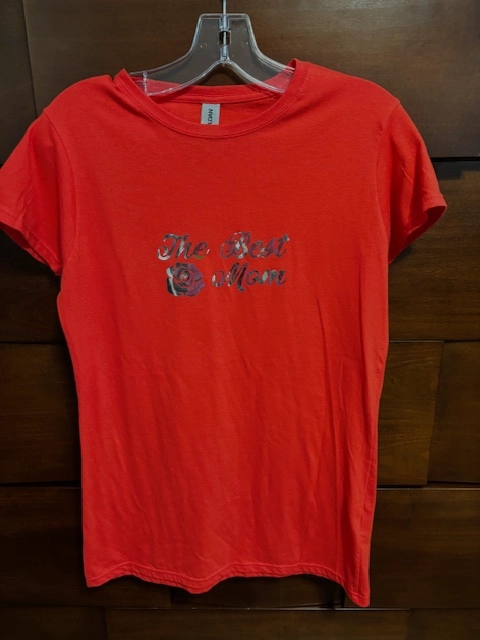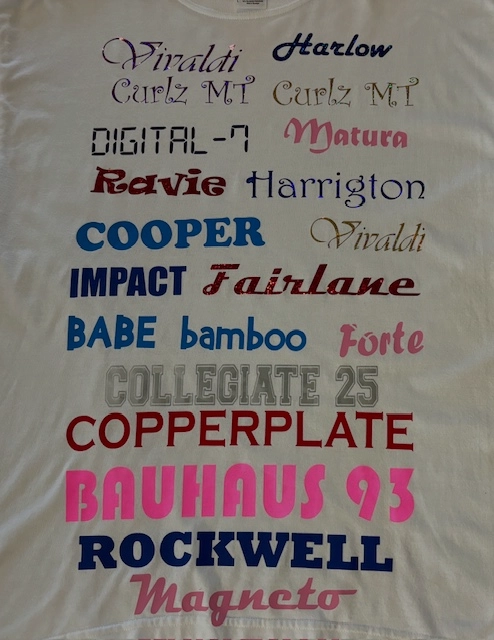The Art of Customized Embroidery: Unlocking the Secrets to Creating Unique and Remarkable Layouts
The tricks to producing custom-made embroidery styles that astound the eye and leave a long-term impression lie in a fragile equilibrium of strategy, creative thinking, and focus to information. As we dig right into the globe of customized embroidery, we reveal the nuanced interaction between thread selection, sew complexity, and design personalization that raises a mere garment to a job of art.
Picking the Right Needlework Threads
When selecting needlework strings, what key aspects should you think about to guarantee the most effective outcomes for your custom styles? The option of needlework thread is important in establishing the final result of your stitched layout. Among the primary considerations is the product of the string. Various products such as cotton, polyester, rayon, and silk offer varying levels of shine, durability, and texture. It is important to pick a thread material that enhances the textile you are stitching on and aligns with the preferred look of the design.
Thicker strings can include dimension and texture to your style, while finer threads are optimal for complex details and tiny message. Additionally, considering the color fastness and washability of the string is important to guarantee that your custom styles preserve their quality and vibrancy over time.
Discovering Different Stitch Strategies
To look into the world of 'Exploring Different Stitch Techniques', one have to comprehend the intricacies and nuances that each stitching approach gives the art of needlework. Different stitch methods not only include aesthetic passion but additionally add to the overall appearance and dimension of the design. One prominent stitch strategy is the satin stitch, which involves very closely stuffed parallel stitches to develop a smooth and shiny surface, suitable for filling out shapes and developing vibrant describes.
On the various other hand, the backstitch is a flexible technique often utilized for laying out and adding fine information. It includes sewing backwards to create a solid line of needlework. In addition, the French knot stitch adds a responsive component to styles, ideal for developing textured accents like blossom centers or ornamental touches.
Discovering various stitch strategies allows embroiderers to play with light, darkness, and depth within their designs, elevating the visual charm and imaginative high quality of their embroidery tasks. By understanding numerous sewing approaches, one can open unlimited possibilities for producing one-of-a-kind and memorable customized embroidery pieces.
Incorporating Personalized Design Elements
Having actually checked out the ins and outs of different stitch methods such as the satin stitch, backstitch, and French knot, the focus now changes in the direction of integrating tailored style aspects in custom-made embroidery jobs. Customized design elements play a vital function in making needlework tasks genuinely distinct and memorable. One means to incorporate customization is by including initials, names, or significant days to the style. This not only includes official site a personalized touch but additionally improves the sentimental worth of the needlework item.
One more means to include customized layout components is by consisting of symbols or themes that hold unique meaning to the recipient or mirror their interests and individuality. As an example, including a favorite blossom, animal, or hobby-related icon can make the needlework design extra meaningful and tailored. Furthermore, choosing colors that resonate with the recipient or straighten with the intended style can better enhance the personalization of the needlework job.
Mastering the Art of Color Control

One secret aspect of shade sychronisation is recognizing color concept. This consists of understanding just how different shades connect with each other, the feelings they convey, and exactly how they can be incorporated to create aesthetically enticing designs. By applying shade concept principles, embroiderers can produce harmonious shade combinations that enhance the general appearance of the layout.
In addition, focusing on comparison is vital in color control. Using contrasting colors can help certain elements of the style pop, boost readability, and develop a visually vibrant needlework item. By understanding the art of shade coordination, embroiderers can boost their styles and develop remarkable items that resonate with clients and audiences alike.
Enhancing Structure With Advanced Embroidery Stitches

French knots, for example, are best for including tiny, raised dots to your style, imitating the appearance of grains or creating a textured surface. Bullion knots, on the other hand, can be used to produce twisted, ropelike aspects that add a lavish feeling to the embroidery. Seed sewing involves small, scattered stitches that can complete areas with a speckled structure, while turkey job develops fluffy, dimensional accents similar to animal hair or foliage. Experimenting with these advanced embroidery stitches permits you to press the limits of standard needlework and produce really distinct and aesthetically appealing textures in your designs.
Conclusion
To conclude, the art of personalized embroidery involves a mix of selecting the best threads, discovering different stitch techniques, including tailored style elements, understanding shade coordination, and boosting structure with sophisticated stitches. By comprehending and implementing these crucial elements, embroiderers can develop special and memorable styles that showcase their creative thinking and skill. Embroidery fanatics can unlock the keys to look at here now creating attractive and bespoke items that stick out and leave a long-term perception.